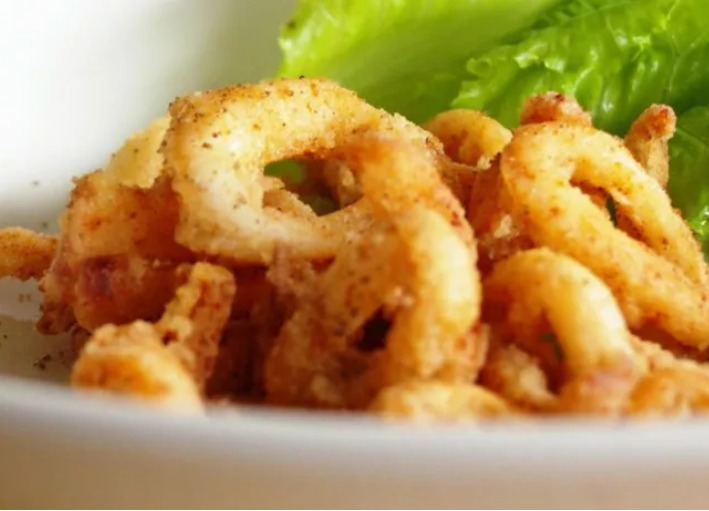old-fashioned porcupine meatballs
There’s something inherently nostalgic about comfort food, and old-fashioned porcupine meatballs are no exception. This classic dish, made from ground beef and rice simmered in a savory tomato sauce, is a meal that has graced American tables for generations. But what exactly makes this dish so beloved? Is it the simple ingredients that create a perfect balance of flavors, or the childhood memories attached to it? Perhaps it’s a little bit of both.
In this article, we’ll explore the history, preparation, and cultural significance of porcupine meatballs. Whether you’re looking to recreate a meal from your past or trying something new, this guide will give you everything you need to know to make the perfect batch of porcupine meatballs.
Table of Contents
| Sr# | Headings |
|---|---|
| 1 | What Are Porcupine Meatballs? |
| 2 | Ingredients for Porcupine Meatballs |
| 3 | How to Make Porcupine Meatballs |
| 4 | Tips for Making the Perfect Porcupine Meatballs |
| 5 | Porcupine Meatballs: A Nostalgic Dish |
| 6 | Variations of Porcupine Meatballs Around the World |
| 7 | Nutritional Information of Porcupine Meatballs |
| 8 | FAQs About Porcupine Meatballs |
What Are Porcupine Meatballs?
Porcupine meatballs are a dish made from ground meat, usually beef, mixed with uncooked rice and other seasonings. The meatballs are then simmered in a rich tomato-based sauce until fully cooked. As the meatballs cook, the rice expands, giving them a spiky appearance—hence the name “porcupine” meatballs.
But why choose this dish over traditional meatballs? The secret lies in the rice. Unlike breadcrumbs that are commonly used in meatballs, rice adds a chewy texture and absorbs the flavors from the meat and sauce, making each bite rich and satisfying. This dish is especially appealing because of its simplicity and the fact that it can be prepared with everyday ingredients you likely already have in your pantry.
The History Behind Porcupine Meatballs
This dish became popular in the United States during the Great Depression. With families seeking budget-friendly meals that could stretch their resources, the addition of rice to meatballs helped extend the protein while adding bulk. It’s a classic example of innovation during tough times—turning simple ingredients into something special.
How Did It Get Its Quirky Name?
The spiky look of the meatballs, with the rice protruding from the meat as it cooks, resembles the quills of a porcupine. This playful name has made the dish especially memorable and a favorite among children and adults alike.
Ingredients for Porcupine Meatballs
Before diving into the process of making porcupine meatballs, let’s take a look at the essential ingredients you’ll need to recreate this classic comfort dish. Each component serves an important role in bringing out the unique flavor and texture that makes these meatballs special.
Ground Beef
The foundation of this dish is ground beef, which gives the meatballs their rich, hearty taste. For the best results, you’ll want to use beef with some fat content—around 80/20 lean-to-fat ratio. Too lean, and the meatballs may end up dry; too fatty, and they may be greasy.
Uncooked Rice
Unlike most meatball recipes that use breadcrumbs, porcupine meatballs use uncooked rice. As the meatballs simmer in the sauce, the rice cooks inside the meatballs, absorbing moisture and swelling up. This not only gives the meatballs their signature look but also keeps them tender.
Eggs
Eggs act as a binder in the mixture, helping the meatballs hold their shape while they cook.
Seasonings
While simple salt and pepper can suffice, adding minced onion, garlic, and herbs such as parsley or oregano can elevate the flavor. Some people even add a pinch of paprika or chili powder for a bit of heat.
Tomato Sauce or Soup
The meatballs are typically simmered in a tomato-based sauce. This could be as simple as canned tomato soup or a homemade sauce made from crushed tomatoes, garlic, onions, and spices. The acidity of the tomatoes complements the richness of the meat, creating a balanced flavor.

How to Make Porcupine Meatballs
Now that you know what goes into porcupine meatballs, it’s time to bring everything together. This step-by-step guide will walk you through the process of making these delicious meatballs.
Step 1: Prepare the Meatball Mixture
In a large bowl, combine your ground beef, uncooked rice, minced onion, garlic, eggs, and seasonings. It’s important to mix the ingredients thoroughly but gently, as over-mixing can result in tough meatballs. Think of this process like shaping a snowball—firm but gentle, keeping the mixture intact without compacting it too much.
Step 2: Shape the Meatballs
Once your mixture is ready, use your hands or a small ice cream scoop to form the meatballs. Aim for golf ball-sized meatballs to ensure even cooking. If you prefer larger or smaller meatballs, adjust the cooking time accordingly.
Step 3: Brown the Meatballs
In a large skillet, heat some oil over medium heat. Add the meatballs in batches, browning them on all sides. This step adds flavor and helps the meatballs hold together during cooking. However, you don’t need to cook them through at this stage, as they will finish cooking in the sauce.
Step 4: Simmer in Sauce
Transfer the browned meatballs to a pot or baking dish. Cover them with your tomato sauce or soup, ensuring they are submerged. Simmer on low heat for 45 minutes to an hour, or until the rice is fully cooked and the meatballs are tender.
Step 5: Serve and Enjoy
Porcupine meatballs are best served hot, with a side of mashed potatoes, pasta, or even a crusty loaf of bread to soak up the sauce. Garnish with fresh herbs like parsley or basil for a pop of color and extra flavor.
Tips for Making the Perfect Porcupine Meatballs
Making porcupine meatballs may seem straightforward, but there are a few tips and tricks that can take your dish from good to great. Here’s how to ensure your meatballs turn out perfect every time.
1. Use the Right Rice
Uncooked long-grain rice works best for porcupine meatballs. It has a firmer texture than short-grain varieties and won’t become mushy during cooking. However, if you prefer a softer texture, you can experiment with different types of rice.
2. Don’t Overwork the Meat
When mixing the meatball ingredients, it’s easy to overmix, which can lead to tough meatballs. Mix just until the ingredients are combined for a tender, juicy result.
3. Keep an Eye on the Sauce
The sauce should be thick enough to coat the meatballs but not so thick that it dries out during cooking. If your sauce is too thick, add a bit of water or broth. If it’s too thin, simmer uncovered for the last 10 minutes to allow some of the liquid to evaporate.
4. Test for Doneness
One of the easiest ways to check if your meatballs are done is by cutting into one and checking the rice. If the rice is tender, the meatballs are ready. You can also use a meat thermometer to ensure the internal temperature reaches at least 160°F (71°C).

Porcupine Meatballs: A Nostalgic Dish
Food has a unique way of evoking memories, and porcupine meatballs are a perfect example of this. For many, this dish is a reminder of childhood dinners or family gatherings. The simple, hearty ingredients are comforting, while the quirky name adds a touch of fun to the meal.
In many ways, porcupine meatballs are like a warm hug on a plate—familiar, satisfying, and full of love. Whether you first encountered them at a family reunion, potluck, or weeknight dinner, the dish holds a special place in the hearts of many.
A Dish That Brings Generations Together
One of the beautiful things about porcupine meatballs is that they’re easy to make and appeal to people of all ages. Kids love the fun name and soft texture, while adults appreciate the hearty flavors. In this way, porcupine meatballs have stood the test of time, remaining a popular choice for home cooks across generations.
Variations of Porcupine Meatballs Around the World
While porcupine meatballs are a classic American dish, the concept of meatballs with rice can be found in many cultures around the world. Let’s take a look at some international variations that put a unique twist on this beloved dish.
1. Kibbeh (Middle East)
In the Middle East, particularly in Lebanon and Syria, a dish similar to porcupine meatballs is known as kibbeh. Made with ground lamb or beef, bulgur wheat, and spices, kibbeh can be baked, fried, or served raw. Like porcupine meatballs, kibbeh is often served with a tomato or yogurt-based sauce.
2. Albondigas (Spain and Latin America)
Albondigas, or Spanish meatballs, are often made with rice and simmered in a rich tomato-based sauce. In Latin American countries, this dish may include additional ingredients like cumin, cilantro, and sometimes even hard-boiled eggs for a flavorful twist on the traditional porcupine meatball.
3. Italian Risotto Balls (Arancini)
While not exactly a meatball, arancini are Italian rice balls stuffed with meat, cheese, or vegetables and then fried to perfection. These crispy rice balls are a delicious cousin to porcupine meatballs, offering a similar blend of rice and savory flavors.
Nutritional Information of Porcupine Meatballs
For those keeping an eye on their nutrition, porcupine meatballs can be a balanced meal, depending on the ingredients used. Below is a general overview of the nutritional content based on a typical serving.
| Nutrient | Amount per Serving |
|---|---|
| Calories | 350-400 kcal |
| Protein | 25-30 grams |
| Carbohydrates | 35-40 grams |
| Fat | 15-20 grams |
| Fiber | 2-3 grams |
| Sodium | 600-800 mg |
A Balanced Dish for All Diets
While porcupine meatballs are hearty and flavorful, they can also be adapted to suit various dietary needs. Using leaner cuts of meat, reducing sodium in the sauce, or opting for brown rice instead of white can make this dish healthier without sacrificing flavor.

FAQs About Porcupine Meatballs
1. Can I use a different type of meat for porcupine meatballs?
Yes, you can use ground turkey, chicken, pork, or a mixture of meats. Keep in mind that different meats have varying fat content, which can affect the texture and flavor.
2. How do I store leftover porcupine meatballs?
Leftover meatballs can be stored in an airtight container in the refrigerator for up to 3 days. They can also be frozen for up to 3 months.
3. Can I use instant rice instead of regular rice?
While instant rice can be used, it may result in a slightly mushier texture. Regular long-grain rice is preferred for the best results.
4. What can I serve with porcupine meatballs?
Porcupine meatballs pair well with mashed potatoes, pasta, or steamed vegetables. You can also serve them with a side of crusty bread to soak up the sauce.
5. Are porcupine meatballs gluten-free?
Yes, as long as you use rice and not breadcrumbs, porcupine meatballs are naturally gluten-free. Be sure to check that your tomato sauce or soup doesn’t contain any hidden gluten.
Conclusion
Old-fashioned porcupine meatballs are more than just a meal—they’re a piece of culinary history that has brought families together for decades. Simple to make, budget-friendly, and incredibly comforting, they’ve earned their place as a timeless dish in many households. Whether you’re making them for the first time or recreating a cherished family recipe, porcupine meatballs are sure to leave you and your loved ones satisfied and smiling.







